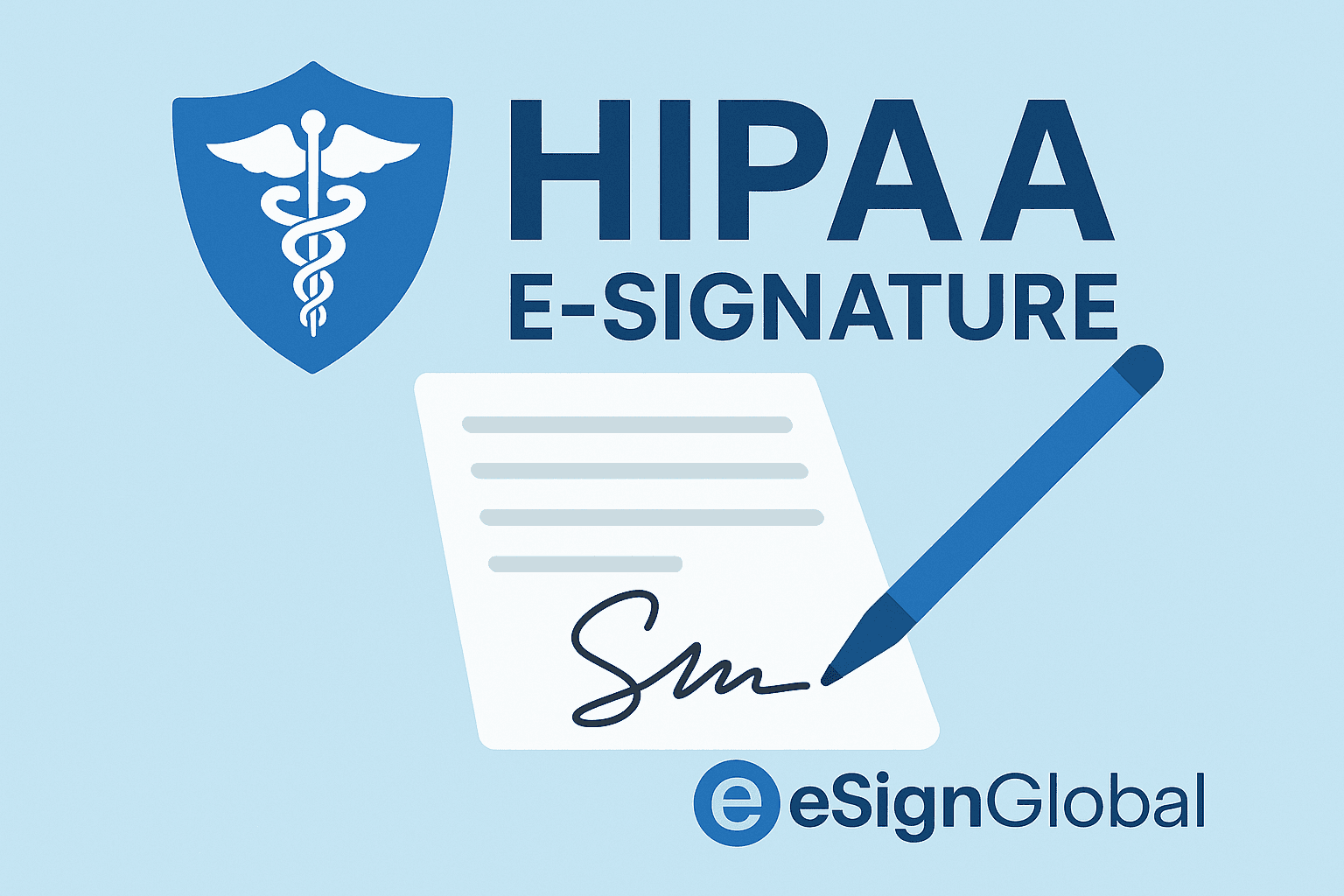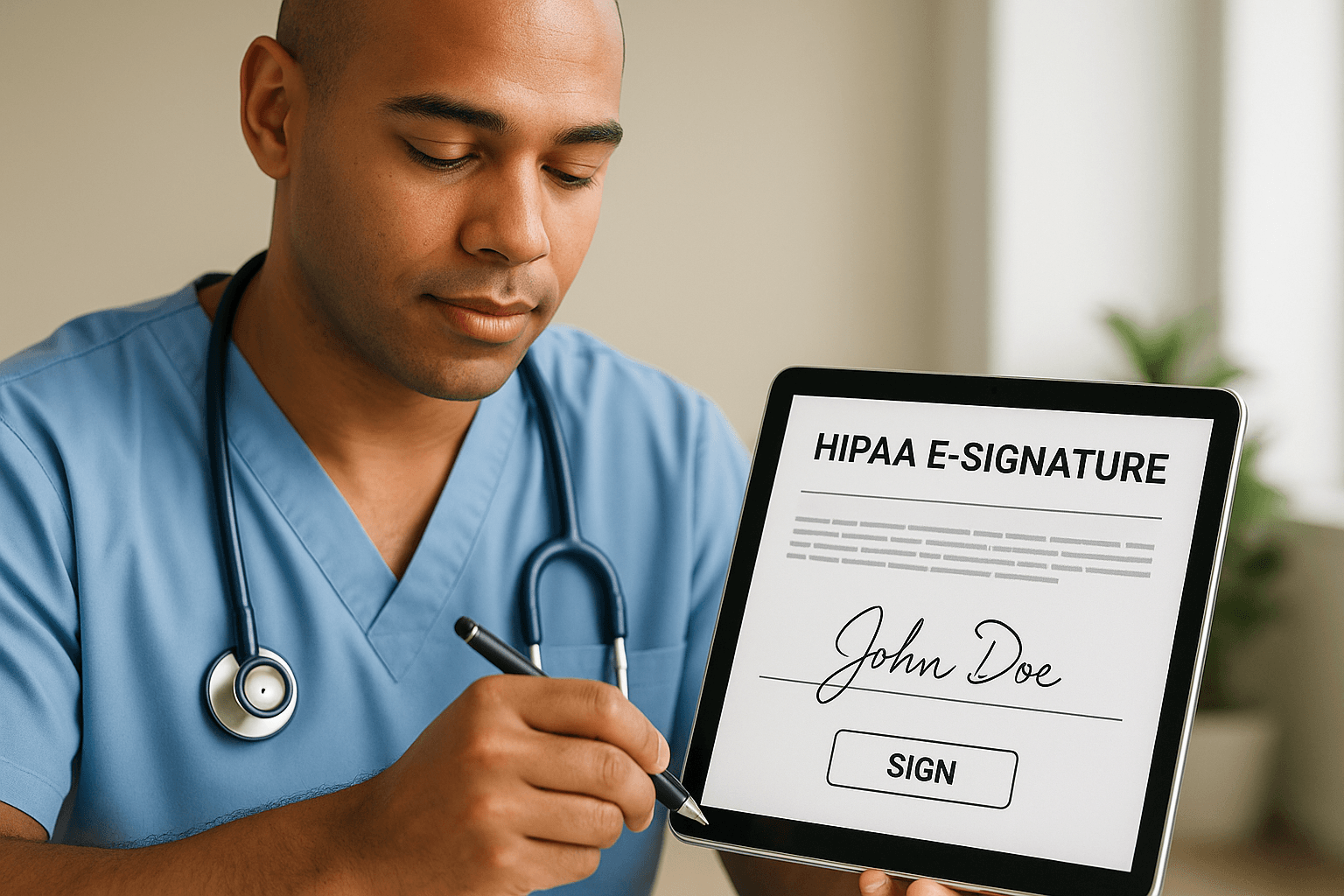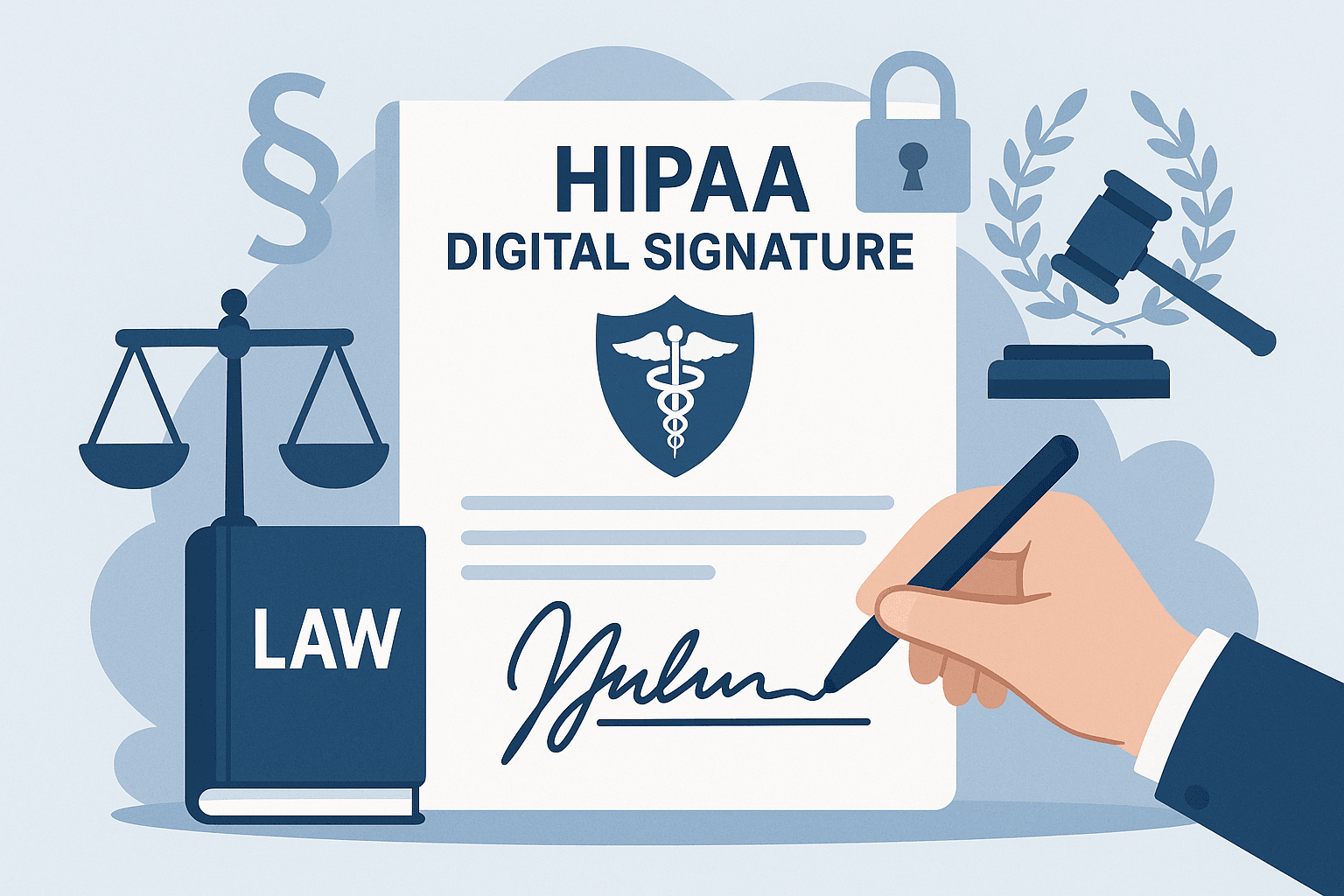WhatsApp or email with our sales team or get in touch with a business development professional in your region.
Top HIPAA Digital E-Signature Solutions for Streamlined Healthcare Workflows





Navigating HIPAA Compliance with eSignatures: A Deeper Look into U.S. Healthcare Regulations
In today’s healthcare landscape, digital transformation is not just gaining momentum—it’s become an operational imperative. With vast volumes of protected health information (PHI) flowing between practitioners, patients, and insurance companies, healthcare organizations must ensure that their tech stack is both agile and compliant. Electronic signatures (eSignatures) offer a compelling solution, facilitating faster workflows without compromising security. But the key question remains: can eSignatures truly align with HIPAA requirements?
The Health Insurance Portability and Accountability Act (HIPAA), enacted in 1996, sets strict standards to protect sensitive patient information. Any digital tool—especially one used to handle PHI—must operate within its framework. In the evolving space of healthcare IT, ensuring that eSignature platforms are HIPAA-compliant is mission-critical not just for legal safety but for safeguarding patient trust.

Understanding HIPAA’s Stance on Electronic Signatures
HIPAA does not explicitly endorse or ban specific technologies; instead, it relies on performance standards. For eSignatures, this means organizations must evaluate whether their solution provides adequate security, integrity, and documentation trails. The Department of Health and Human Services (HHS), under 45 CFR §164.312, mandates covered entities and business associates to implement technical safeguards to protect PHI. These include:
- Unique user identification
- Automatic log-off mechanisms
- Audit controls
- Encryption and decryption
When applying electronic signatures to HIPAA-covered documents—such as patient consent forms, telehealth agreements, or authorization to disclose PHI—the platform used must preserve the confidentiality, integrity, and availability of the data.
The challenge isn’t the legality of eSignatures per se—both the Uniform Electronic Transactions Act (UETA) and the federal ESIGN Act permit electronic signatures in healthcare—but rather ensuring operational compliance with HIPAA alongside those frameworks.
Business Associate Agreements: A Non-Negotiable
A critical component of HIPAA compliance for eSignature providers lies in the Business Associate Agreement (BAA). Any provider hosting PHI on behalf of a covered entity must sign a BAA, detailing how they will safeguard that data and report any breaches. Not all eSignature platforms offer a BAA, making many popular solutions non-starters for healthcare clients.
This is where choosing the right platform becomes a strategic decision. eSignGlobal, for instance, not only supports BAAs but also incorporates multi-layered security protocols aligned with NIST standards—creating a foundation that not only meets HIPAA expectations but routinely exceeds them.

Risk Management and Audit Trails: HIPAA-Compliant Logging
One of the lesser-known but highly critical requirements under HIPAA’s Security Rule is the implementation of audit controls. These controls, commonly interpreted as tracking logs, must record user actions that interact with electronic PHI (ePHI).
An appropriately configured eSignature platform must capture:
- Timestamped records of signature events
- IP address and device identification when available
- User ID verification logs
- Document integrity and hash validation data
eSignGlobal offers advanced audit trail functionality updated in real-time and sealed using SHA-256 cryptographic hashing. These records aren’t just accessible—they’re immutable and legally admissible, providing full traceability in case of compliance audits or disputes.
Combined with Role-Based Access Control (RBAC) and granular permission settings, audit logs in platforms like eSignGlobal help institutions fulfill both HIPAA’s and Joint Commission’s mandates on digital documentation.
Enhancing Patient Care Through Digital Consent and Expedited Workflows
Within the framework of HIPAA compliance, eSignature technology isn’t just a legal checkbox—it’s a driver for better healthcare services. Instant signing reduces turnaround time for critical actions like surgical consent, eligibility verification, behavioral health authorizations, and insurance benefits coordination.
This streamlined turnaround was evident in a study conducted by the American Health Information Management Association (AHIMA), which reported that digital consent platforms can reduce the average document turnaround from 3.2 days to under 12 hours. This means treatments begin faster, claims process sooner, and patients receive care without unnecessary bureaucratic friction.
For example, pediatric hospitals using eSignGlobal increased their care readiness rate by 27% within six months of implementation—largely attributable to faster documentation cycles, particularly in emergency admit workflows.

Why eSignGlobal is Built for U.S. Healthcare Compliance
In contrast to generic eSignature products, eSignGlobal tailors its architecture to the healthcare sector. Features such as multi-lingual compliance support, automated BAA scaffolding, secure cloud environments with regional failover, and industry-aligned encryption make it a natural fit for HIPAA-conscious organizations.
Key differentiators include:
- Fully compliant with UETA, ESIGN Act, and HIPAA
- Seamless integration with EHR systems such as Epic, Cerner, and Athenahealth
- BAAs provisioned by default for covered entities
- Support for user authentication methods ranging from two-factor verification to biometric integration
- Controlled document templates for risk management professionals
Further, eSignGlobal’s responsive onboarding and support make it significantly easier to navigate legal and technical implementation compared to industry peers. Healthcare clients report over 35% savings on operational eSignature costs within the first year—without sacrificing compliance or performance.
Final Thoughts: Compliance is Not Optional—It’s Strategic
Choosing an eSignature platform that aligns with HIPAA isn’t just about avoiding fines; it’s about integrating trust into every level of health information exchange. In a sector where patient confidence and data responsibility intersect, platforms like eSignGlobal don’t just reduce paperwork—they redefine how legally sound, patient-centric care is delivered.
By prioritizing compliance, auditability, and workflow efficiency, organizations stand to gain not just regulatory peace of mind, but also measurable improvements in care delivery and operational ROI. For U.S.-based healthcare providers, leveraging a HIPAA-aligned platform like eSignGlobal is no longer a future-proofing tactic—it’s today’s best practice.

Shunfang
Head of Product Management at eSignGlobal, a seasoned leader with extensive international experience in the e-signature industry.
Follow me on LinkedIn
Get legally-binding eSignatures now!
30 days free fully feature trial
Business Email
Get Started
 Only business email allowed
Only business email allowed
Latest Articles


